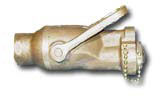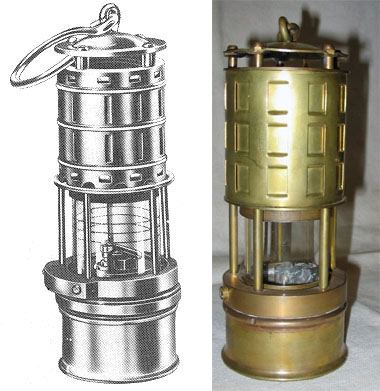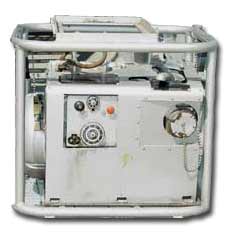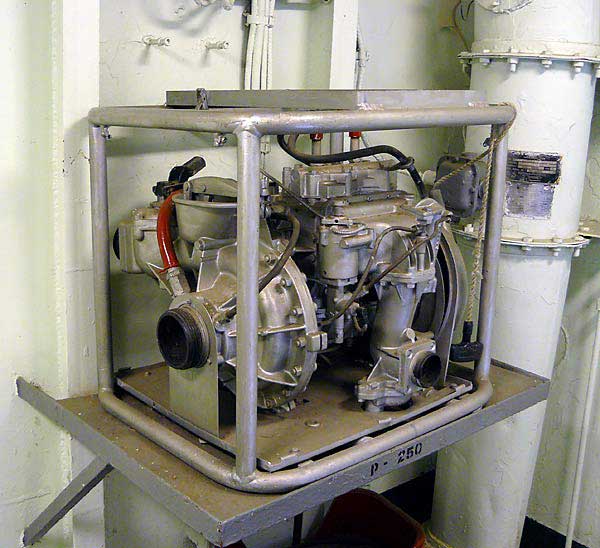 |
 |
 |
 |
| HOME |
| ABOUT US |
| PARTICIPATE |
| COLLECTIONS |
| DC EQUIPMENT MUSEUM |
| SHIP&SUBMARINE MUSEUM |
| WW II DAMAMGE REPORTS |
| SHIPBOARD CASUALTIES |
|
EQUIPMENT |
| DC EQUIPMENT Museum |
| Portable Pumps and Dewatering Equipment |
| P-250 |
|
Development on the P-250 pump began in late 1956 to replace
the heavier P-500 and P-500 (GT) pumps, and the P-60 pump in mid
1960s. The pump was a 250 gpm, two-cycle, two-cylinder,
gasoline-driven, 25-HP pump. It was a self-contained unit (i.e.,
not dependent on the ship for power). Ignition was by magneto
built into the flywheel. Lubricating oil, 2190 TEP, was mixed in
with the 80- to 100-octane gasoline; no other lubrication was
required. The six-gallon fuel tank provided one hour of
operation. The pump consisted of an engine, centrifugal pump, primer pump, water outlet gate, self-winding pull starter, fuel tank, motor controls, and a pressure regulator with gauge. Accessories provided with the pump included a special tri-gate valve with two 1 ½-inch and one 2 ½-inch male connections, a 3-inch by 10-foot hard rubber suction hose, a 2-inch by 20-foot exhaust hose, and a foot valve strainer. The pump was self-priming up to 16 feet; manual priming was required for greater suction lifts. The 2 ½-inch discharge hose could be connected to an eductor for lifts above 20 feet. A 3-inch male suction connection and the discharge side had a 2 ½-inch male connection to attach a hose, wye-gate or tri-gate for multiple hose runs in firefighting. The pump weighed 157 pounds without the fuel tank, which weighed 52 ½ pounds. Two personnel were required to transport the P-250 pump and up to eleven to set up and rig it for operation. In ship wide or major emergencies, any member of the ship’s company could provide assistance in operating the pump; otherwise, pump teams from repair party lockers operated the pump. The repair lockers with specific P-250 teams in Condition I were 1, 2 and sometimes 3 and 4, depending on the ship’s class. Suitable means had to be provided to carry the poisonous exhaust gases into the clear, particularly when the pump was used below decks. A 2-inch by 20-foot rubber exhaust hose was coupled to the exhaust outlet to remove the gases through an alternate overboard discharge connection or to the weather deck when operating on the DC deck and below. After being operated with sea water, the pump had to be drained and flushed with fresh water before being restored. The pumps were generally stowed topside in water- and fume-proof sealed covers for safety because of the gasoline tanks, as well as to reduce salt water corrosion.
For more information, see the Index. |

